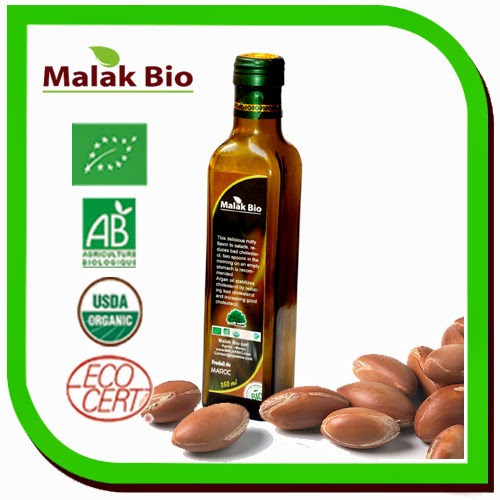For 4 people, Preparation and cooking time: 1 hour.
- 12 green asparagus of average size
- 480 g seabass fillet without skin
- brik pastry
- a few leaves of lettuce for decoration
- 24 coriander leaves
- 6 saffron
- pistils oudi (clarified butter)
- 3 tablespoons olive oil
- salt, pepper
For the argan oil vinaigrette
- 2 cloves pink garlic
- 2 tablespoons soy sauce
- 1 glass argan oil
- 2 tablespoons sherry
- vinegar salt, pepper
The pastry used for brik, small triangles with sweet or savory filling, is called malsouka. It is prepared by beating three eggs and mixing with about 200 g durum wheat semolina and a tablespoon of extravirgin olive oil. Leave to stand at least 1 hour and cook the mixture in an oiled pan to give a very thin pastry sheet. Clean the asparagus, scald in salt water and keep topping up with very cold water. Dry with a cloth. Cut the seabass fillet into 12 fingers 7 centimetres long. Heat the olive oil with the saffron in a pan for 5 minutes and allow to cool to enhance the flavor. Pour the oil on the fish fingers and leave to macerate for 30 minutes with salt and pepper. Cut the brik pastry sheets into 24 strips measuring 7 centimeters by 10. Brush the clarified butter onto the pastry strips. When the asparagus is dry, roll into the brik pastry, leaving the tips uncovered. Drain the fish fingers, keeping the saffron oil for decoration. Place on two coriander leaves and roll into the brik pastry like cannoli. Cook the asparagus and fish fingers in a non-stick pan and season with pepper and salt. Prepare a serving dish with a little salad, arrange the asparagus and fish on it. For the vinaigrette, finely slice the cloves of garlic and mix with the other ingredients in a suitable vessel or a mixer. Serve with the asparagus and seabass in brik pastry.




.jpg)